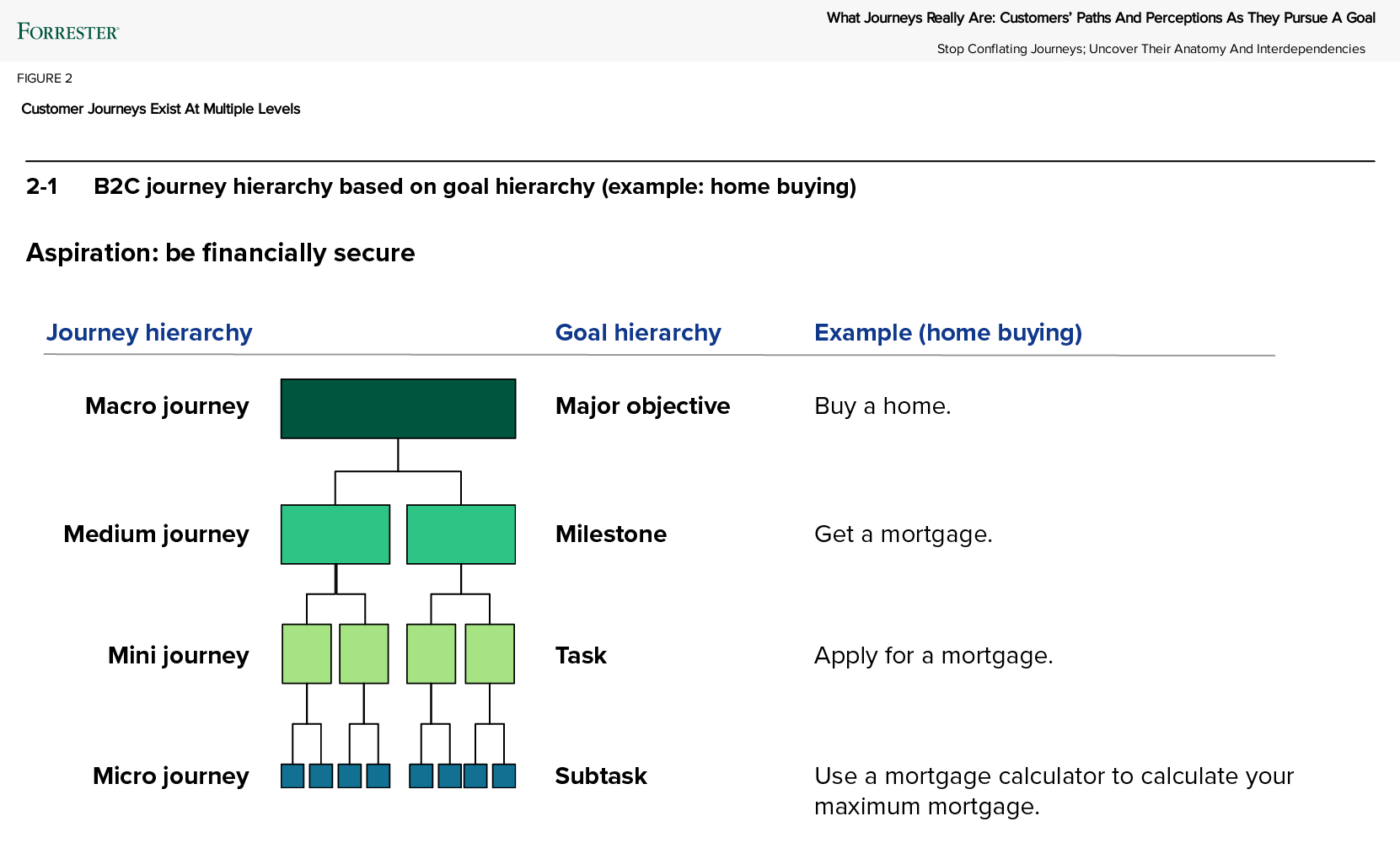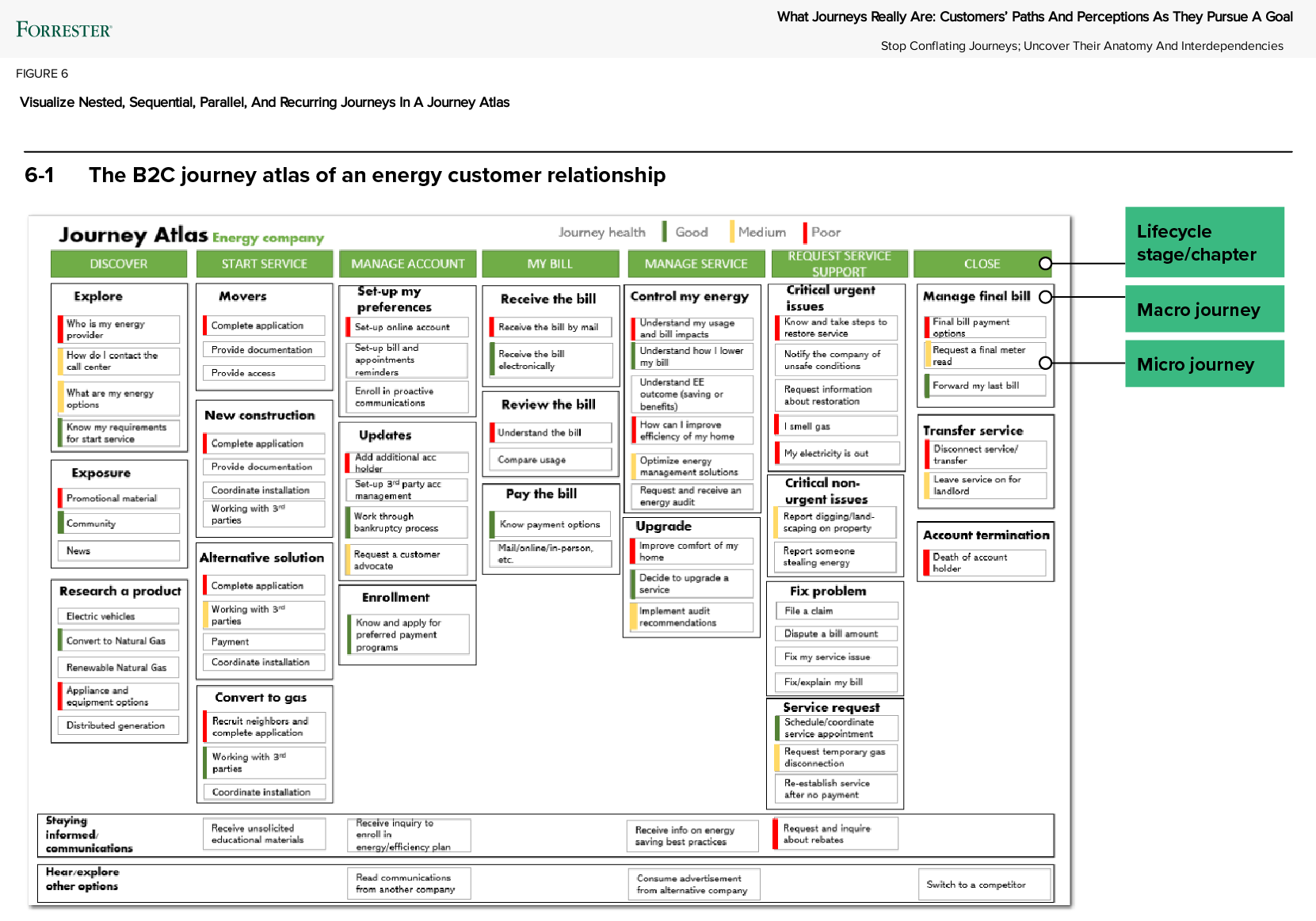Don’t Let Customer Journeys Be Misunderstood
The plea of the song “Don’t Let Me Be Misunderstood” is spot on for customer journeys: In the 60 years since the track was written, a variety of artists are still creating their own versions. Made a classic by Nina Simone, the Animals turned it into a commercial, upbeat tune; the group Santa Esmeralda into a Latin-disco hybrid; Joe Cocker into a mournful blues number; Cat Stevens into Western music; Lana Del Rey into a melancholic song; and Lady Gaga into a jazzy number.
Journeys are popular, and everyone wants a piece of the action, rightly so: You should use journeys in your organization. And like the different arrangements and recordings of “Don’t Let Me Be Misunderstood,” you, too, can put your spin on journeys: Journeys are versatile and play out differently for each customer, company, and industry. But just like cover artists must stay true to what makes “Don’t Let Me Be Misunderstood” recognizable across all of its covers, you must stay true to the things that make a journey a journey.
We are not experts on creating a great cover song. But we are experts in helping you with customer journeys. That’s why we published the report, What Journeys Really Are: Customers’ Paths And Perceptions As They Pursue A Goal — Stop Conflating Journeys; Uncover Their Anatomy And Interdependencies.
First: Stop Conflating Journeys With Lifecycles, Campaigns, Or Processes
Conflating journeys is a rampant problem. Most notably, people conflate journeys with customer lifecycles, campaigns, or business processes. Why is this a problem? Unlike journeys, these other concepts are not inherently about the customers or their goals, emotions, paths, and experiences. Instead, they are about the business. Conflating journeys with them prevents your organization from understanding the customer perspective, degrades your customers’ experiences, and erodes your organization’s success.
“The Customer Journey”? That’s Usually A Customer Lifecycle, Not A Journey.
When you hear stakeholders say things like “end-to-end journey” or “the customer journey,” they usually mean a customer lifecycle, especially if the image that they show you has a series of chevrons and ends in “loyalty” or “advocacy.” While the lifecycle is a useful tool to organize your journeys, it is not a journey but rather an abstract, generic view of a customer’s progression through stages of engagement with a company or product (e.g., discover, evaluate, commit, initiate, participate, actualize, advocate).
“The [Insert A Business Goal] Journey”? That’s Usually A Campaign Or Process, Not A Journey.
When stakeholders say things like “awareness journey” or “conversion journey,” they usually think about a customer’s progression toward a company goal, not a customer goal. While these company goals are important, visualizations of those kinds of progressions usually don’t capture the customer perspective, leave out interactions with other firms, or omit actions that customers take by themselves.
Second: Appreciate Journeys For What They Really Are
A customer journey is simply this: A customer’s path and perceptions as they pursue a goal.
1) Journeys Are Always About Customers’ Goals.
People — whether in their personal lives or their business lives — need to achieve goals, and to do that, they embark on journeys. Some of those journeys include your organization. Why do we use “include” and not “with”? Your organization is part of the journey but is often not in all steps. Just think about home financing. It’s not a journey with just a lender! It’s a journey that involves financial advisors, realtors, friends, competing buyers, etc.
Always: Scrutinize whether journeys meet the definition — are they about customers’ paths and perceptions as they pursue a goal?
2) Journeys Exist At Different Levels.
When you get into discussions about what a journey is, maybe it’s because you and your colleagues are talking about different levels. It’s like Russian dolls, really, or layers of an onion, if you like. In the example below, we show different levels in the home buying journey (you can find a B2B example in the report). Most often, customer experience colleagues talk more about macro-journeys and user experience colleagues more about micro-journeys.
Always: Make sure that you have an internal language that helps everybody understand what level to which they are referring. It doesn’t matter what names you use for the levels or whether you have two or three or four.
3) The Anatomy Of A Journey Has Four Critical Elements.
The four critical elements are as follows (check out the example below; you can also find a B2B example in the report):
- The customer(s) and their goal.
- The journey boundaries and the customer’s path.
- The journey participants. That means you and the customer but also other companies or people or institutions!
- The customer’s perceptions (baseline, curve, and punch).
Always: Break down journeys into these four critical elements. Make sure that you identify both the short-term and the long-term customer goal for all steps — which means, also, those of participants other than you, as well as the emotions that customers have before, during, and after their journey.
4) Journeys Don’t Occur In Isolation. They Affect Each Other.
Journeys are interdependent; they flow into, connect with, and influence each other. You need to consider the relative impact of a journey on others and create consistency across journeys. You need to understand the accumulated impact of journeys and scale fixes across journeys. If you miss this, you will run into unexpected effects of changes in one journey on another.
Always: View individual journeys in the context of other journeys. Create a journey atlas to do so (see the example below; you can also find a B2B example from Elsevier in the report).
Let’s Agree: Don’t Let Journeys Be Misunderstood
Let’s instead use journeys to empower customers to achieve their goals, creating value for customers and for the business. Create a lounge jazz version, a gritty R&B version, or a disco-flamenco version. But make sure your journeys are still “a customer’s path and perceptions as they pursue a goal.”
If your organization wants to play a role in customers’ lives and increase customer value, you need to help customers get value from their journeys.
If you’re a Forrester client, check out this new report, What Journeys Really Are: Customers’ Paths And Perceptions As They Pursue A Goal. You can also reach out for a guidance session or inquiry with my coauthor and colleague, Maxie Schmidt, or with me.




